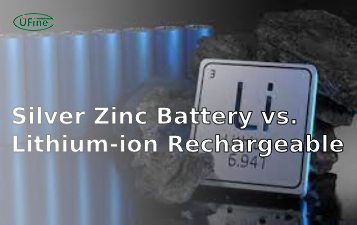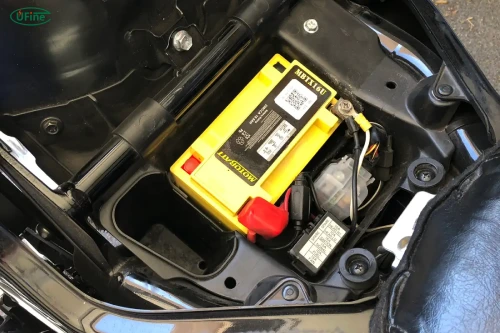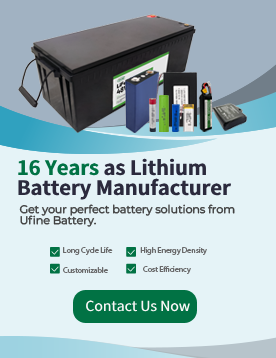
- Part 1. Signs you need a motorcycle battery replacement
- Part 2. Understanding different types of motorcycle batteries
- Part 3. Tools and materials you’ll need
- Part 4. Safety precautions before you start
- Part 5. Step-by-step motorcycle battery replacement guide
- Part 6. How to choose the right replacement battery
- Part 7. Motorcycle battery replacement cost
- Part 8. Extending the life of your new motorcycle battery
- Part 9. Common mistakes to avoid during battery replacement
- Part10. FAQs
Learning how to perform a motorcycle battery replacement not only saves you money on workshop fees but also keeps your machine reliable for years. In this comprehensive guide, we’ll explain how to identify a weak battery, choose the right replacement, install it correctly, and maintain it for long-term performance.
Part 1. Signs you need a motorcycle battery replacement
Many riders overlook the early warning signs of a dying battery. Recognizing them early can prevent being stranded on the road. Here’s what to look out for:
- Slow or weak engine cranking: If your starter motor turns sluggishly or fails to crank at all, your battery may not have enough power.
- Dim or flickering headlights: A healthy battery provides consistent brightness. Dimming lights indicate low voltage or poor charge retention.
- Clicking sound when you turn the key: A single click often means your battery is weak; repeated clicks suggest there’s not enough current to start the engine.
- Frequent jump-starts: If you find yourself jump-starting your bike more than once a month, it’s time for a new battery.
- Age: Most motorcycle batteries last 2–5 years, depending on type and usage habits.
- Corrosion, swelling, or leaks: Physical damage to the case or terminals is a sign of internal failure.
If your motorcycle exhibits any of these issues, conduct a voltage test with a multimeter. A reading below 12.4 volts (for a 12V battery) indicates it’s losing capacity and likely needs replacement.
Part 2. Understanding different types of motorcycle batteries
Not all motorcycle batteries are created equal. The correct choice depends on your bike’s model, performance needs, and budget. Let’s explore the most common types:
a. Lead-Acid (Conventional) Batteries
The traditional type found in older motorcycles. These batteries use a liquid electrolyte that requires periodic topping up with distilled water.
- Pros: Inexpensive and widely available.
- Cons: Require maintenance, can leak acid, and are sensitive to vibration.
b. AGM (Absorbed Glass Mat) Batteries
AGM batteries are the most common choice for modern motorcycles. They hold the electrolyte in glass fiber mats, making them maintenance-free and spill-proof.
- Pros: Maintenance-free, vibration-resistant, long-lasting.
- Cons: Slightly more expensive than standard lead-acid types.
c. Gel Batteries
Gel batteries use a silica-based gel instead of liquid acid. They perform well in extreme temperatures and require no maintenance.
- Pros: Very stable, ideal for hot climates or off-road use.
- Cons: Slower charging, higher cost.
d. Lithium-Ion Batteries
Lightweight and powerful, lithium batteries are the premium choice for high-performance motorcycles.
- Pros: Very light, charge quickly, long lifespan.
- Cons: Expensive and require compatible charging systems.
Choosing the right battery type ensures proper performance and safety. Always check your motorcycle manual or consult a technician to confirm compatibility.
Part 3. Tools and materials you’ll need
A motorcycle battery replacement is straightforward with the right preparation. Gather these tools and supplies before you begin:
- Screwdrivers or a socket wrench set (depending on your bike’s design).
- Gloves and safety glasses for protection.
- Clean cloth or wire brush for cleaning terminals.
- Dielectric grease or petroleum jelly (optional, for corrosion prevention).
- Multimeter to check voltage.
- Your new battery — ensure it matches the original size, voltage, and terminal position.
Having everything ready minimizes mistakes and saves time.
Part 4. Safety precautions before you start
Motorcycle batteries contain sulfuric acid and produce hydrogen gas, both potentially hazardous if handled carelessly. Follow these safety measures:
- Always turn off the ignition and remove the key before working.
- Work in a well-ventilated area away from open flames or sparks.
- Wear gloves and eye protection to avoid acid burns.
- Handle the battery carefully and keep it upright to prevent leaks.
- Disconnect the negative (–) terminal first, then the positive (+) — this reduces the risk of short-circuiting.
- Dispose of the old battery at a certified recycling center or automotive shop. Never throw it in household trash.
Part 5. Step-by-step motorcycle battery replacement guide
Once you’re ready, follow this detailed process to replace your battery safely and effectively:
Locate the Battery
Most motorcycle batteries are under the seat, side panel, or fuel tank. Consult your owner’s manual for exact placement.
Remove Panels or Seat
Use a screwdriver or wrench to remove the bolts or screws securing access panels.
Disconnect the Battery
Start by disconnecting the negative (black) terminal to prevent sparks. Then disconnect the positive (red) terminal. Remove any hold-down straps or brackets.
Take Out the Old Battery
Lift it out carefully, keeping it upright to avoid spilling any acid.
Clean the Terminals and Tray
Use a dry cloth or wire brush to remove corrosion and debris. Apply a thin layer of dielectric grease to the terminals if desired.
Install the New Battery
Place the new battery in the same orientation as the old one. Connect the positive terminal first, followed by the negative terminal. Tighten connections securely but don’t over-torque.
Secure and Test
Reinstall the hold-down brackets and panels. Turn on the ignition and test the headlights, horn, and starter. If everything powers up smoothly, your installation is successful.
Part 6. How to choose the right replacement battery
Choosing the right battery is not just about fitting it into the tray — it must meet your motorcycle’s power requirements. Consider the following factors:
- Voltage: Most motorcycles use 12V batteries; older models may use 6V.
- CCA (Cold Cranking Amps): Indicates how well the battery performs in cold weather. Higher CCA means better starting reliability.
- Capacity (Ah): Determines how long the battery can supply current before discharging.
- Size and Terminal Layout: Always match the physical dimensions and polarity orientation.
- Brand and Warranty: Reputable brands like Yuasa, Motobatt, and Shorai offer reliable performance and warranty coverage.
If you ride frequently in cold or wet conditions, prioritize durability and CCA. For sport or racing bikes, lithium batteries offer superior power-to-weight performance.
Part 7. Motorcycle battery replacement cost
Battery prices vary by type and brand. Here’s a general cost breakdown:
| Battery Type | Price Range (USD) | Typical Lifespan | Maintenance Level |
|---|---|---|---|
| Lead-Acid | $30–$80 | 2–3 years | Regular |
| AGM | $60–$150 | 3–5 years | Maintenance-free |
| Gel | $80–$180 | 4–6 years | Maintenance-free |
| Lithium-Ion | $100–$300 | 5–7 years | Maintenance-free |
Professional installation at a motorcycle service center usually adds $30–$70 in labor fees.
For DIY enthusiasts, the total cost is simply the price of the new battery.
Part 8. Extending the life of your new motorcycle battery
A few simple habits can significantly increase your battery’s lifespan and performance:
- Keep it charged: If you don’t ride frequently, use a smart trickle charger or battery maintainer to prevent self-discharge.
- Ride regularly: Short, infrequent rides prevent the alternator from fully charging the battery. Aim for at least one long ride per week.
- Clean terminals: Remove corrosion buildup every few months. Corroded connections increase resistance and reduce charging efficiency.
- Store properly: During winter or long storage, remove the battery and keep it in a cool, dry location.
- Avoid overcharging: Use a charger specifically designed for motorcycle batteries to prevent overheating or swelling.
With proper care, you can extend the lifespan of most motorcycle batteries by 30–50%.
Part 9. Common mistakes to avoid during battery replacement
Even experienced riders sometimes make costly mistakes. Avoid these common errors:
- Connecting terminals in reverse: Reversing polarity can damage the motorcycle’s electrical components.
- Using an incompatible battery type: Always match voltage and CCA ratings.
- Neglecting to charge a new battery: Some batteries (especially conventional lead-acid) must be fully charged before installation.
- Ignoring corrosion or damaged cables: Dirty or frayed connections can cause intermittent electrical failures.
- Over-tightening bolts: This can strip threads or crack the terminals.
Following the correct process ensures a reliable electrical system and longer battery life.
Part10. FAQs
How often should I replace my motorcycle battery?
On average, you should replace your motorcycle battery every 3 to 5 years. However, factors such as riding frequency, climate, and maintenance habits can shorten or extend that lifespan.
Can I use a car battery charger on my motorcycle battery?
Not recommended. Car chargers usually output higher amperage, which can overcharge and damage smaller motorcycle batteries. Always use a motorcycle-specific charger rated at 1–2 amps.
How can I tell if my motorcycle battery is completely dead?
Use a multimeter to check voltage:
- 12.6V or higher = Fully charged
- 12.4V = Weak
- Below 12V = Likely dead
If the voltage drops immediately after charging, the battery’s internal cells are likely sulfated and need replacement.
What should I do if my new battery still doesn’t start the motorcycle?
Check for loose or corroded terminals, a blown fuse, or a faulty starter relay. If the battery reads healthy voltage but still fails to crank, the issue may lie in the charging system (stator or regulator/rectifier).
How should I dispose of an old motorcycle battery?
Take it to a licensed recycling center or automotive retailer. Lead and acid are hazardous materials, so they must be processed safely. Many stores even offer discounts for trading in your old battery.
Related Tags:
More Articles

What is the Difference Between Silver Zinc Battery vs. Lithium-ion Rechargeable?
Compare silver zinc and lithium-ion rechargeable batteries: energy density, cycle life, safety, cost, and uses in drones, medical devices, EVs, and electronics.
What are Watts and Watt Hours in Battery?
Understand watt vs watt-hour in batteries: key differences, how to calculate capacity, and why they matter. Includes free comparison table.
Best 10 Blood Pressure Monitor Battery Review: Finding the Most Reliable
Are you looking for a reliable Blood Pressure Monitor battery? Here is a complete guide with the top 10 best blood pressure monitor batteries.
Bluetooth Headphone Battery Guide: All You Need to Know
Maximize headphone battery life with expert tips! Learn how to charge, check, troubleshoot, and choose the best bluetooth headphone battery in 2025.
LiFePO4 Battery VS. Lithium-ion Polymer Battery: Which One Is Best?
Comprehensive comparison of LiFePO4 vs Lithium Ion Polymer batteries: energy density, safety, lifespan, cost. Find out which battery suits your needs in 2025.



